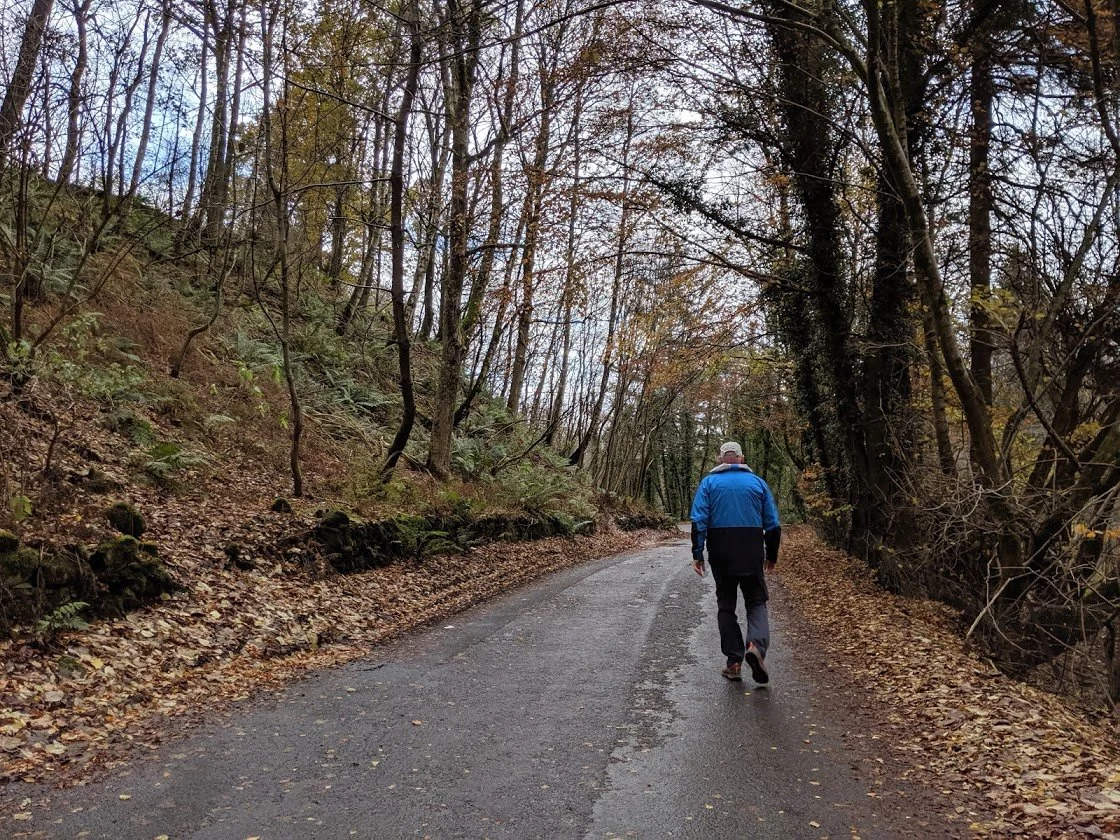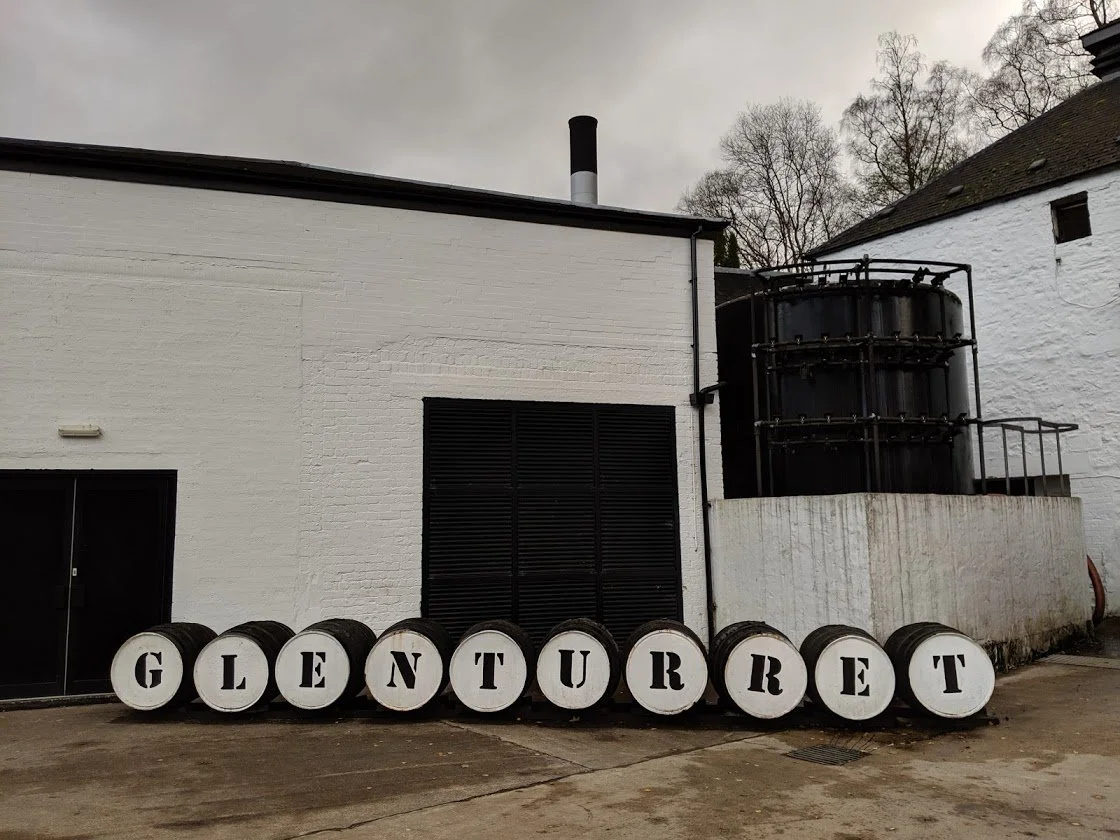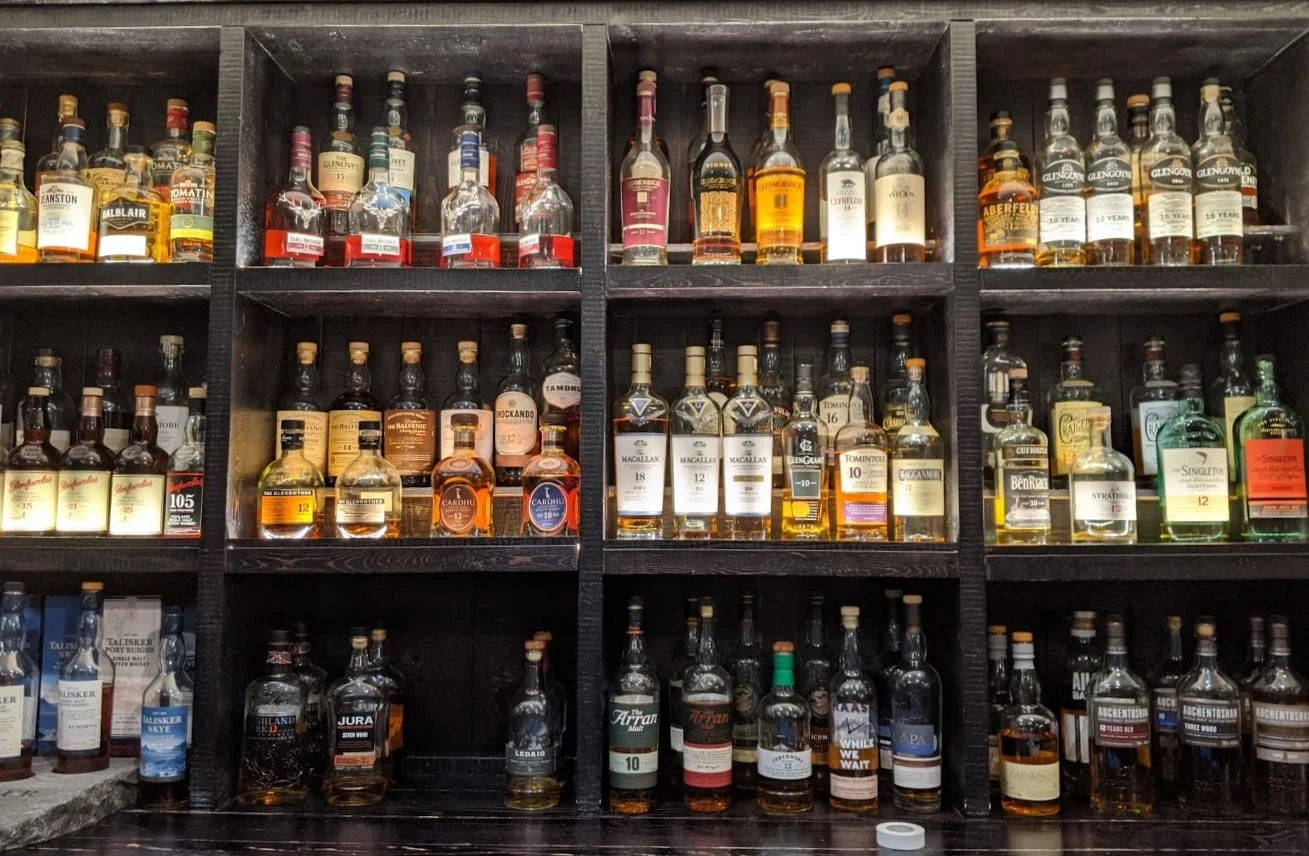Savoring Scotland's Water of Life
There are many things in this world that I cannot legitimately lay claim to knowing much about. A “toe-in-the-water” knowledge of whiskey, (The Water of Life) would be one. Golf also comes to mind!
However, one should never be afraid to learn, so thus began our journey to the Glenturret Distillery in Crieff, Scotland, a pleasant half-hour bus ride from our apartment in Perth.
From the bus stop it was a 45 minute walk into the hills above Crieff where the distillery is located. With a distinct “winter is coming” chill in the air and snow on the distant mountains we enjoyed a walk along the icy Turret River before turning right up the hill to the distillery. Twenty minutes later we were enjoying a dram of single malt whiskey before the tour began.
As we walked along the forested road to the distillery we kept wondering…why is this place so hidden especially considering that it claims to be the “oldest distillery in Scotland?” and as such carries with it a salient legacy? Not to mention the legions of tourists and whiskey aficionados that flock here in the high season.

During our pre-tour briefing we learned that the distillery was hidden in the glen due to its early history as the site of several illicit stills. These stills, as well as hundreds of others throughout Scotland, were very small and thus easy to pack up when the Excise officers came around. At that time there was a prohibition on the making of whiskey over a certain limit and the government was trying to control its production. That simple explanation put an end to the mystery as to why Glenturret is so remote.
Let the tour begin. Please turn off all cameras! No photography allowed inside.

Both of our tour guides were exceptionally well versed in the entire process of making whiskey from malting of the barley to mashing, fermentation, distillation and finally, maturation. In the case of Glenturret, the maturation takes place in three distinct casks (Bourbon, European Oak Sherry, and American Oak Sherry) lending each of the finished products their own unique color (from nearly crystal clear to a beautiful amber hue) and flavor profile.
Other than our gracious guides we were the only people enjoying a tour that day which made the entire experience more relaxing as the on-season crowds can put a dent in the “up close and personal” touch that we were shown. Needless to say, travelling anywhere, and visiting various sites, is a whole different experience when crowds are at their low point.
When Alfred Barnard, the British writer for Harper’s Weekly Gazette, visited Glenturret he described the glen as “a perfect paradise to artists, who come in great numbers to transfer some of its transcendent beauties to canvas” It is safe to say he would know as he visited 162 British distilleries, including 129 Scotch operations to research, and write, his famous 1887 book “The Whisky Distilleries of the United Kingdom.” That opus went on to become the most unique, compelling and comprehensive guide to the origins of Scotland’s national drink, as well as a lively picture of life and travel in the Victorian age.
To be sure, artists still make the pilgrimage to this beautiful place. Only now they are joined by throngs of whiskey lovers from around the world…and the occasional golfer! And of course…two newcomers to the fascinating world of whiskey.

Like any good tour the finish takes place in the tasting room. In the case of Glenturret it is in the same room as the three sample casks used in the maturation process which allows the visitor to detect the fragrance that each of the casks possesses. Having taken in the smell of the different casks truly enhances the final tasting experience.
Today there are over 120 active distilleries spread across Scotland, which are split into five whisky-producing regions. Although we will not have time to visit the remaining 119 it was a great experience to visit Glenturret and to learn more about the simple and magical process of producing Scotland’s water of life.
However, and strictly in the interest of journalistic research as well as a desire to increase our own knowledge, we will continue to imbibe!

